|
| |
|
STORY PLACEMENT THIS STORY TAKES
PLACE DURING THE THE TV STORY "THE TRIAL OF A TIME LORD," AND THEREAFTER IN A PARALLEL UNIVERSE.
WRITTEN BY GARY RUSSELL
DIRECTED BY GARY RUSSELL
RECOMMENDED PURCHASE BIG FINISH 'UNBOUND' CD #4 (ISBN 1-84435- 016-9) RELEASED IN AUGUST 2003.
BLURB
The thing about
meddling with time
is that one moment
something is real,
the next, it's been
erased.
Like dominoes, as
one timeline falls,
the others come
cascading down
around it. You can
FORGE new timelines,
but before long, the
distinction between
what is, what was,
what might be and
what never can be
begins TO blur.
Out of this grow
myths and legends.
The Doctor was one
such legend, but no
one knows whether
he truly ever existed.
Well, not now they
don't. The Mighty One,
ruling from the city
of Chronopolis has
made sure of that. |
|
|
He Jests at Scars... AUGUST 2003
This is a tricky one to review. There are so many things that are wrong with this story that they threaten to smother the things that do work. The best thing about this play is, without a doubt, Michael Jayston, returning to the role of the Valeyard - the Doctor’s twisted future self. His cultured voice drips with menace while at the same time sounding charming and intelligent. I imagined him dressed in a funereal black Victorian ensemble. Its clear that Jayston relished being the ‘evil Doctor’ again. In a different version of the sixth Doctor’s trial, the Doctor returned to the Matrix in attempt to save his alter ego. After a titanic struggle, the Valeyard won, absorbing the Doctor’s remaining regenerations. This, apparently, created “a sixth, seventh, eighth, ninth, tenth, eleventh and twelfth Doctor all in one”. Exactly how this works is unclear, but it has left the Valeyard essentially immortal, and holding all the know-ledge of all the Doctor’s selves.
super-Doctor seems like a mixture of the Master and the Monk, whizzing around history and altering events to suit his purposes, whilst at the same time tracking down a collection of doomsday devices from the series’ back catalogue. He’s accompanied, for some reason, by Ellie Martin, a young girl from Earth who acts as his companion, albeit one with her life on a knife-edge. It seems she’s there to do the Valeyard’s chores for him while he struts about acting all superior. She’s played well enough by Juliet Warner, though she does sometimes becomes irritating.
Meanwhile, if indeed that is the correct term, Mel is on the Time Lord space station following the events of the Doctor’s trial, witnessing the Valeyard’s atrocities, which are threatening Gallifrey in the present, despite happening in the future. She’s also in a sort of space prison, ten years later, waiting to take down ‘the Mighty One’, as the Valeyard has taken to calling himself. Bonnie Langford is impressive as a hardened, battle-weary Mel; however, the very idea of a hardened, battle-weary Mel is so ridiculous that you can’t take her seriously at all!
a complete lack of believability and internal logic. Why does the Valeyard hate being called the Doctor, whilst also referring to himself as such? And why does Ellie even call him Doctor, if he introduces himself as Valeyard? The plot is as baffling as it is melodramatic; there are plenty of fan-pleasing visits to various points in the series’ continuity, but they ultimately add up to little enjoyments. Indeed, these hops in time are confusing, with little or no logic applied to the effects of the Valeyard’s continual changing of history, even by Doctor Who’s generally lax standards. Worst of all though, the over-the-top evilness of the Valeyard comes across as poor characterisation after Full Fathom Five’s far more credible portrayal of a dark Doctor.
The play does end on a
strong note though - a surprisingly downbeat conclusion that works well, even if it’s hard
to see quite how we all got there. In the end, I was left wondering just
how much of what I’d heard was supposed to have really happened, and how
much was ill-usory. While such head-scratching confusion may well have
been the point, it doesn’t quite equate with entertainment.
|
|
|
Copyright © Daniel Tessier 2008
Daniel Tessier has asserted his right under the Copyright, Designs and Patents Act, 1988 to be identified as the author of this work. |
|
|
Looking back at all the Unbound releases, it’s astonishing to think that He Jests at Scars… was almost passed over completely. Gary Russell had been the man to posit the idea of doing a ‘what if…’ series in the first place, and as a result he had assumed that once the project were given the green light, he’d promptly be commissioned to write his sprawling, tortuous Valeyard piece. Not so. It was only once the five slots had all been filled that Russell was given a belated chance to put his indelible stamp on the series, with an impromptu sixth script that would finally see the series tackle a direct, fan-pleasing question of the type he’d initially envisaged: “what if the Valeyard had won?” How ironic, then, that the most promising instalment on paper would be the one to meet the quietest reception.
On the face of it, He Jests at Scars… has got everything going for it. Not only does it offer listeners a glimpse of a universe where the Valeyard overwhelmed Old Sixy, hijacking his remaining regenerations and becoming the immortal ‘Mighty One’, but it also brings back Michael Jayston - the majestic performer who almost single-handedly kept The Trial of a Time Lord out of the abyss.
Scars… doesn’t feel like an Unbound story at all. Indeed, in bringing both Co-ordinator Vansell and Mel Bush into the fold and then having them try to restore history as it should have been, Russell engenders the strong feeling that they are going to succeed. This false sense is then compounded by the Valeyard’s theatrical fall from grace. In trying to forge the Web of Time into whatever shape amuses him most at any given moment, Time turns against the Valeyard, tricking him into unravelling his own timeline with devastating results. As the story approaches its nihilistic climax, the narrative seems to be begging for the sixth Doctor to appear out of the ether and set things right, jesting at those titular scars which never felt a wound; at the man who thought that he could do better, only to find that he couldn’t.
I had expected something more along the lines of Dalek Empire, with the Valeyard being depicted as an indomitable antagonist and the drama being borne of the courage of those hopelessly opposing him. As it is, He Jests at Scars… feels like it would have only taken the slightest of nips and tucks to be turned into a canonical post-Trial tale, and, in my view, it would have been all the stronger for it.
My real beef though is that the play just isn’t very compelling. Listening to the Valeyard and his companion, Ellie, meander through the Doctor’s past lives, collecting evil diadems and doomsday weapons as they go, is diverting for a short while, but once it becomes apparent that the storyline is little more than an Eight Doctors-style litany, one’s attention does begin to wane. Even when the plot begins its long pull towards the dénouement, Russell confounds the listener by pulling out the rug from under their feet, leaving them clueless as to what’s real and what only used to be… or never will be. It speaks volumes about this production that it’s carried by the grit (yes, the grit!) of Bonnie Langford’s world-weary Mel, and her increasingly fraught attempts to hit the reset button.
The production is not a complete write-off, however. Jayston is as mercurial a leading man as he was a guest star, and – though she’s a deliberate (and arguably derivative) irritant – Juliet Warner’s Ellie Martin is used to beautifully illustrate where the Doctor ends and the Valeyard begins. Indeed, listening to the Valeyard toying with Ellie’s original roadkill fate is one of the play’s most harrowing scenes. What’s more, for all its flaws, He Jests at Scars… is the only original Unbound story to truly conjure up the comic book feel sought - Russell’s staggering (if subjective) Chronopolis and planet-hopping plotline are unbound at least in a colourful, expansive sense, and Jim Mortimore’s sound design really helps the listener to see every hue.
Overall though, He Jests at Scars… is a disappointment. Any story
that picks up where the Trial would have ended had Eric Saward got his way
should have been epic, eloquent and exciting. And whilst this play may
confidently tick two of those boxes, when it’s excitement that’s lacking,
scale and style don’t
account for much.
|
|
|
Copyright © E.G. Wolverson 2010
E.G. Wolverson has asserted his right under the Copyright, Designs and Patents Act, 1988 to be identified as the author of this work. |
|
|
Unless otherwise stated, all images on this site are copyrighted to the BBC and are used solely for promotional purposes. ‘Doctor Who’ is copyright © by the BBC. No copyright infringement is intended. |
|

.jpg)
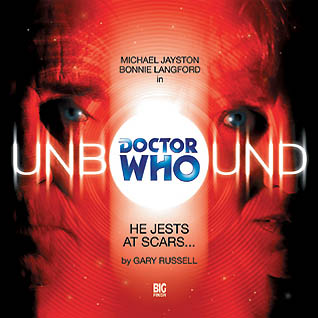
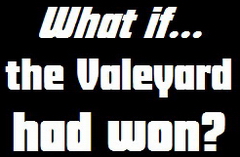 Although
this sounds formidable, in practice this new
Although
this sounds formidable, in practice this new 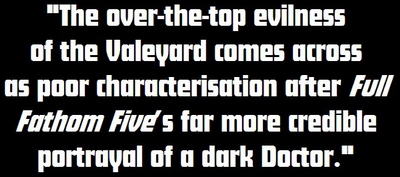 This
is the play’s
whole problem:
This
is the play’s
whole problem: 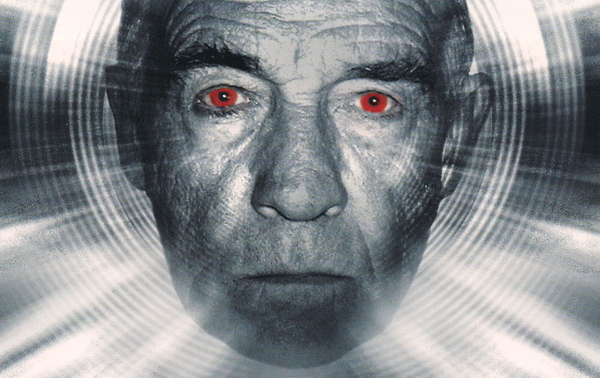
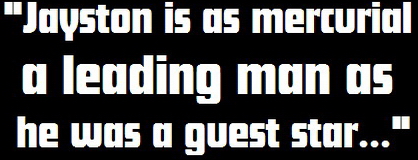 Bizarrely
though, He Jests at
Bizarrely
though, He Jests at